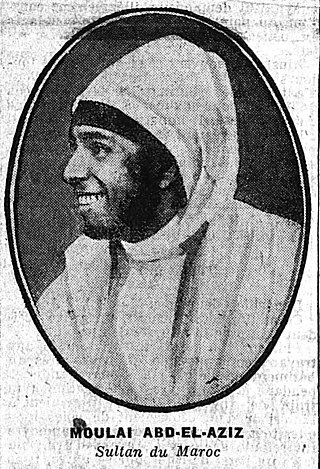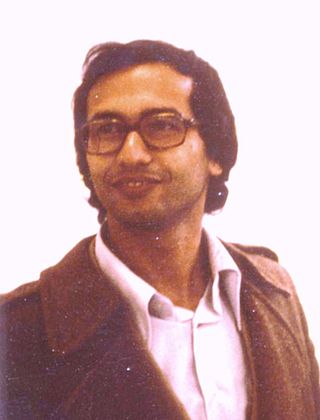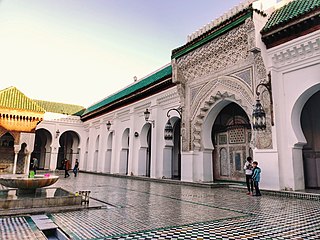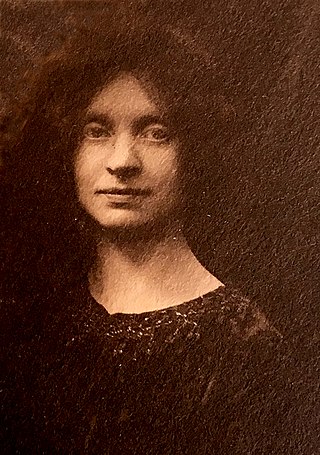Related Research Articles

Moulay Ismail Ibn Sharif, born around 1645 in Sijilmassa and died on 22 March 1727 at Meknes, was a Sultan of Morocco from 1672 to 1727, as the second ruler of the 'Alawi dynasty. He was the seventh son of Moulay Sharif and was governor of the province of Fez and the north of Morocco from 1667 until the death of his half-brother, Sultan Moulay Rashid in 1672. He was proclaimed sultan at Fez, but spent several years in conflict with his nephew Moulay Ahmed ben Mehrez, who also claimed the throne, until the latter's death in 1687. Moulay Ismail's 55-year reign is the longest of any sultan of Morocco. During his lifetime, Isma’il amassed a harem of over 500 women with more than 800 confirmed biological children, making him one of the most prodigious fathers in recorded history.

MoulayAbd al-Aziz bin Hassan, born on 24 February 1881 in Marrakesh and died on 10 June 1943 in Tangier, was a sultan of Morocco from 9 June 1894 to 21 August 1908, as a ruler of the 'Alawi dynasty. He was proclaimed sultan at the age of sixteen after the death of his father Hassan I. Moulay Abdelaziz tried to strengthen the central government by implementing a new tax on agriculture and livestock, a measure which was strongly opposed by sections of the society. This in turn led Abdelaziz to mortgage the customs revenues and to borrow heavily from the French, which was met with widespread revolt and a revolution that deposed him in 1908 in favor of his brother Abd al-Hafid.

Tahar Djaout was an Algerian journalist, poet, and fiction writer. He was assassinated in 1993 by the Armed Islamic Group.
The Maghrawa or Meghrawa were a large Berber tribal confederation in North Africa. They were the largest branch of the Zenata confederation. Their traditional territories around the time of Muslim expansion into the Maghreb in the 7th century were around present-day northeastern Algeria. They ruled parts of the western Maghreb on behalf of the Umayyad Caliphate of Cordoba at the end of the 10th century and during the first half of the 11th century.
Thierno Saïdou Diallo, usually known as Tierno Monénembo, is a Francophone Guinean novelist and biochemist. Born in Guinea, he later lived in Senegal, Algeria, Morocco, and finally France since 1973. He has written eight books in all and was awarded the 2008 prix Renaudot for The King of Kahel.

Abdellatif Laâbi is a Moroccan poet, journalist, novelist, playwright, translator and political activist.
Moulay Al-Rashid ibn Sharif, known as Moulay Al-Rashid or Moulay Rachid, sometimes called Tafiletta by the English, was Sultan of Morocco from 1666 to 1672. He was the son of the founder of the 'Alawi dynasty, Moulay Sharif, who took power in the Tafilalt region in 1631.

Marc Fumaroli was a French historian and essayist who was widely respected as an advocate for French literature and culture. While born in Marseille, Fumaroli grew up in the Moroccan city of Fez, and served in the French army during the Algerian War.

Fes el Bali is the oldest walled part of Fez, the second largest city of Morocco. Fes el Bali was founded as the capital of the Idrisid dynasty between 789 and 808 AD. UNESCO listed Fes el Bali, along with Fes Jdid, as a World Heritage Site in 1981 under the name Medina of Fez. The World Heritage Site includes Fes el Bali's urban fabric and walls as well as a buffer zone outside of the walls that is intended to preserve the visual integrity of the location. Fes el Bali is, along with Fes Jdid and the French-created Ville Nouvelle or “New Town”, one of the three main districts in Fez.
Abdelmajid Benjelloun is a Moroccan author, historian and poet. He is a specialist in the history of North Morocco. He taught Public Law at the Casablanca University since 1983. He is a member of 'la Maison de la poésie du Maroc' and professor in the history of international relations at the department of Law at the Mohammed V University in Rabat since 2002. Since 1999 he produces a French language program on Moroccan radio (RTM), Paroles d'esplanade. Benjelloun is also a painter.

Alain Mabanckou is a novelist, journalist, poet, and academic, a French citizen born in the Republic of the Congo, he is currently a Professor of Literature at UCLA. He is best known for his novels and non-fiction writing depicting the experience of contemporary Africa and the African diaspora in France, including Broken Glass (2005) and the Prix Renaudot-winning Memoirs of a Porcupine (2006). He is among the best known and most successful writers in the French language, and one of the best known African writers in France. In some circles in Paris he is known as "the Samuel Beckett of Africa".

Éditions du Seuil, also known as Le Seuil, is a French publishing house established in 1935 by Catholic intellectual Jean Plaquevent (1901–1965), and currently owned by La Martinière Groupe. It owes its name to this goal "The seuil (threshold) is the whole excitement of parting and arriving. It is also the brand new threshold that we refashion at the door of the Church to allow entry to many whose foot gropes around it".

Maurice Le Glay was a French Army officer and author of works on Morocco. He served as an artillery and political officer in Algeria, Tunisia and Morocco before retiring to a civil post in 1918 so that he could begin a literary career. He wrote numerous journal articles and several books including a description of the French defeat at the Battle of El Herri. He was a strong admirer of the Berber people, though he was criticised for inspiring the political division of the Berber and Arab peoples in Morocco. He retired to Casablanca, where he died and was honoured with a street named in his memory.

Jean-Noël Pancrazi is a French author.
Abdelhak Serhane is a Moroccan novelist writing in French. Serhane grew up in the Middle Atlas region of Morocco, in the village Azrou.

Fez or Fes is a city in northern inland Morocco and the capital of the Fez-Meknes administrative region. It is the second largest city in Morocco, with a population of 1.11 million, according to the 2014 census. Located to the northwest of the Atlas Mountains, it is surrounded by hills and the old city is centered around the Fez River flowing from west to east. Fez has been called the "Mecca of the West" and the "Athens of Africa". It is also considered the spiritual and cultural capital of Morocco.
The following is a timeline of the history of the city of Fez, Morocco.

The Zawiya Dila'iya, also known as the Zawiyaof Dila and the Dila'iya Sultanate, was a Sufi brotherhood, centred in the Middle Atlas range of Morocco.

Aline Réveillaud de Lens, was a French novelist and painter who lived and worked in Tunisia and Morocco. She signed her works A. R. de Lens, A.-R. de Lens and Aline de Lens.
The Conquest of Fez or Capture of Fez took place in 1554 between the Algerian forces of Salah Rais and the ruler of the Saadi Sultanate, Mohammed ash-Sheikh. The battle took place on 7 January at Qudyat-al-Mahali, a suburb near Fez and occurred after Salah Reis’ two previous victories against the Saadians, one at Taza and another at the Sebou river.
References
- ↑ Salim Jay, Dictionnaire des écrivains marocains, Eddif, 2005, p. 320
- ↑ Simon Gikandi, Encyclopedia of African Literature, ed. Taylor & Francis, 2003, ISBN 978-0-415-23019-3, p. 677